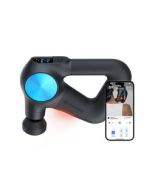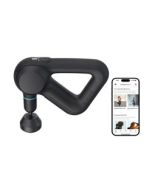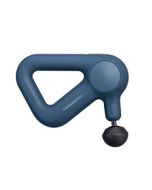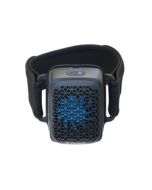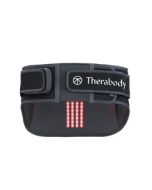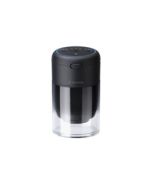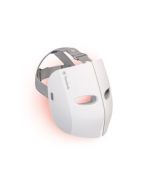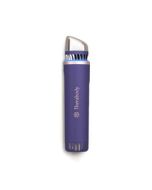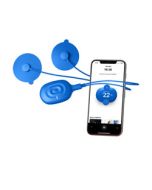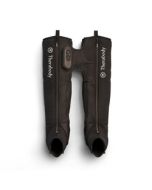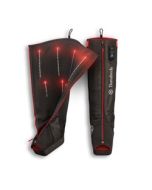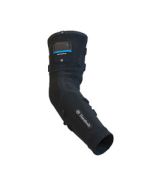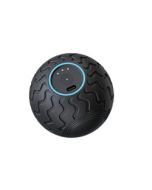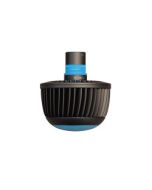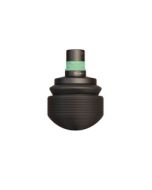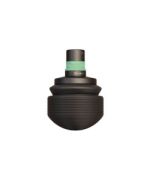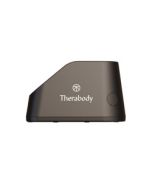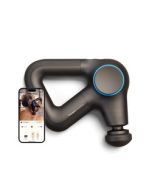How a Massage Gun Works and Its Potential Benefits
- Apr 18, 2025

Massage guns, also known as percussive therapy devices, have gained popularity as a tool for muscle recovery, pain relief, and overall well-being. Designed to mimic the effects of manual massage, these handheld devices use rapid bursts of pressure to target soft tissue. But how do they work?
What Is a Massage Gun?
A massage gun is a handheld device that delivers quick, repetitive pulses of pressure into the body’s muscles and fascia. This technique, known as percussive therapy or vibration therapy, is often used by athletes, physical therapists, and individuals seeking relief from muscle soreness and stiffness.
These devices typically feature adjustable speeds and interchangeable heads to target different muscle groups. When applied to the body, a massage gun provides deep tissue stimulation that can feel like a vigorous sports massage.
How Do Massage Guns Work?
Massage guns work by delivering rapid, concentrated pulses of pressure—often up to 40 percussions per second—into the muscle tissue. This movement enhances blood flow, stimulates the nervous system, and encourages lymphatic drainage. The result is improved circulation, reduced muscle tension, and accelerated recovery following physical activity.
Percussive therapy stimulates both mechanoreceptors (which respond to pressure and touch) and proprioceptors (which help regulate balance and body position). This dual stimulation may help reduce the perception of pain and enhance mobility.
A 2023 study published in Healthcare found that massage guns may reduce delayed-onset muscle soreness (DOMS) when used immediately after exercise or 24 to 72 hours post-exercise. Additionally, vibration therapy has been shown to improve flexibility and muscle performance, as evidenced by a 2021 study in Sensors.
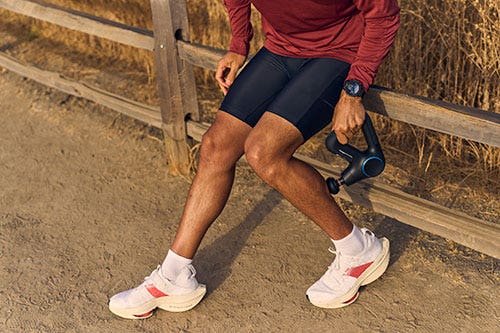

Potential Benefits of Massage Guns
While research is still evolving, studies suggest massage guns may offer a variety of health and wellness benefits:
1. Muscle Recovery and Reduced Soreness
Several studies indicate that percussive therapy may help reduce muscle soreness and stiffness following physical activity. This can be especially beneficial for athletes or those engaging in high-intensity workouts.
2. Improved Range of Motion
Massage guns may enhance flexibility by relaxing tight muscles and improving joint mobility. A 2020 study in Journal of Sports Science & Medicine found that vibration therapy could help increase the range of motion when used before or after exercise.
3. Enhanced Circulation
Percussive therapy can improve blood flow, which supports tissue healing and nutrient delivery to muscles. Improved circulation may also help flush out metabolic waste products like lactic acid.
4. Reduced Muscle Stiffness
Massage guns can temporarily reduce muscle tone and stiffness by disrupting adhesions and breaking up scar tissue. This may be helpful for individuals managing chronic muscle tightness or recovering from injury.
5. Pain Relief
By stimulating pressure receptors and potentially reducing inflammation, massage guns may offer temporary relief from pain associated with muscle strains, tension headaches, or general musculoskeletal discomfort.
When to Use a Massage Gun
Massage guns can be used as part of a warm-up routine, post-workout recovery, or even during periods of inactivity to relieve stiffness. For best results, experts recommend applying the device to targeted muscle groups for 30 seconds to 2 minutes, depending on the level of soreness or tightness.
However, massage guns should not be used over bony areas, open wounds, or areas of acute inflammation. Individuals with certain health conditions, including deep vein thrombosis, advanced diabetes, or nerve disorders, should consult a healthcare provider before using percussive therapy.
Final Thoughts
Massage guns are emerging as a valuable tool for muscle recovery and overall wellness. By enhancing circulation, reducing soreness, and improving mobility, these devices may complement traditional massage and physical therapy.
While more research is needed to fully understand their long-term effects, current evidence supports their use for short-term relief of muscle stiffness and recovery after exercise. As with any wellness tool, it’s important to use massage guns correctly and consult a healthcare provider if you have underlying health conditions.
*This article is intended for informational purposes only and should not be substituted for medical advice. For medical questions and advice, it is always best to consult with your trained physician.
Sources:
Cochrane, D. J. (2011). Vibration exercise: The potential benefits. International Journal of Sports Medicine, 32(2), 75–99. https://pubmed.ncbi.nlm.nih.gov/23251939
Garmory, A. et al. (2023). The effect of percussive therapy on muscle soreness and recovery: A systematic review. Healthcare (Basel), 11(7), 980. https://pubmed.ncbi.nlm.nih.gov/37711710
Konrad, A. et al. (2021). The acute effects of percussion therapy on the range of motion and performance: A meta-analysis. Sensors (Basel), 21(19), 6685. https://pubmed.ncbi.nlm.nih.gov/33466606
Zainuddin, Z., Newton, M., Sacco, P., & Nosaka, K. (2005). Effects of massage on delayed-onset muscle soreness, swelling, and recovery of muscle function. Journal of athletic training. https://pmc.ncbi.nlm.nih.gov/articles/PMC1250256/




